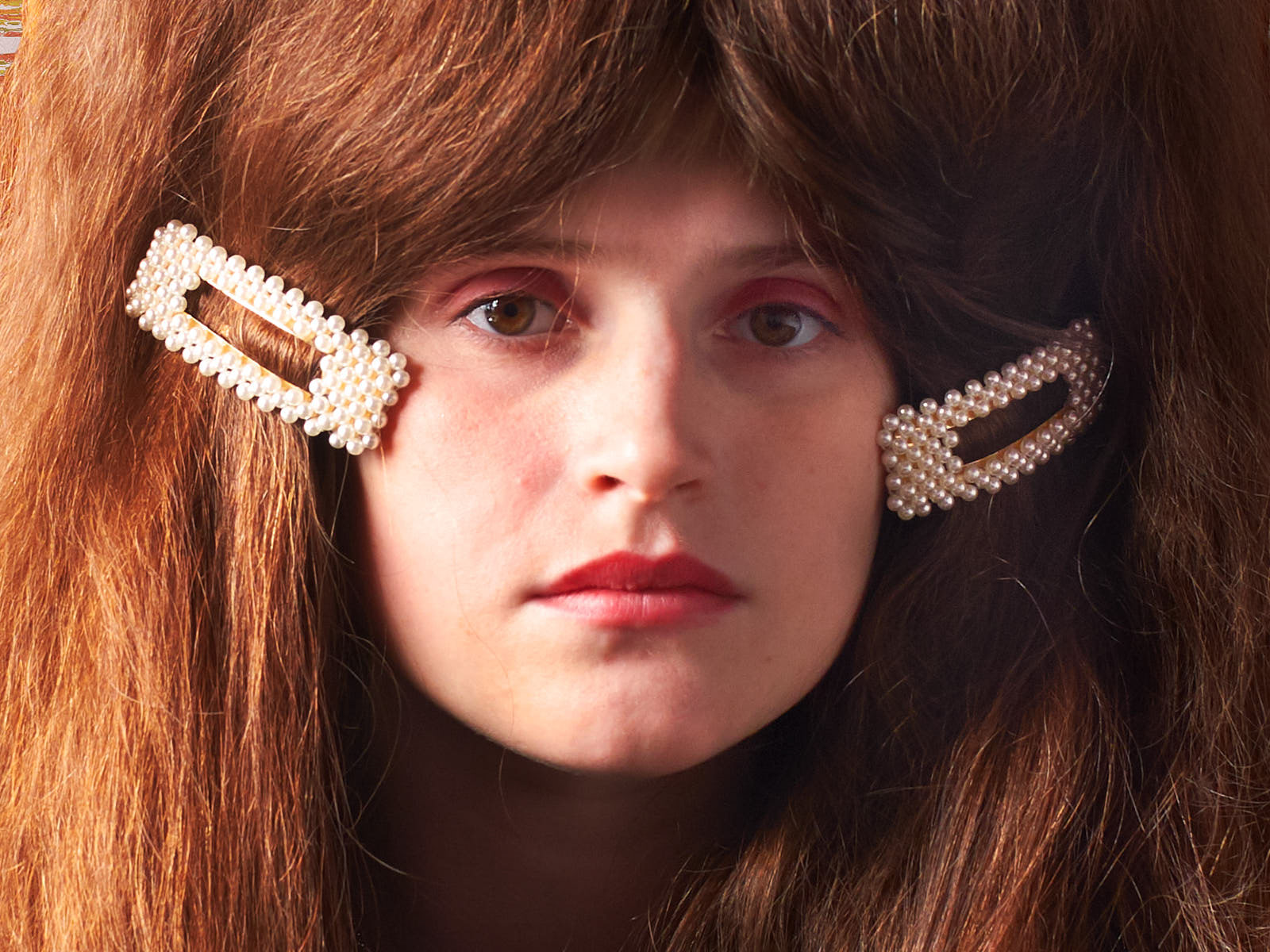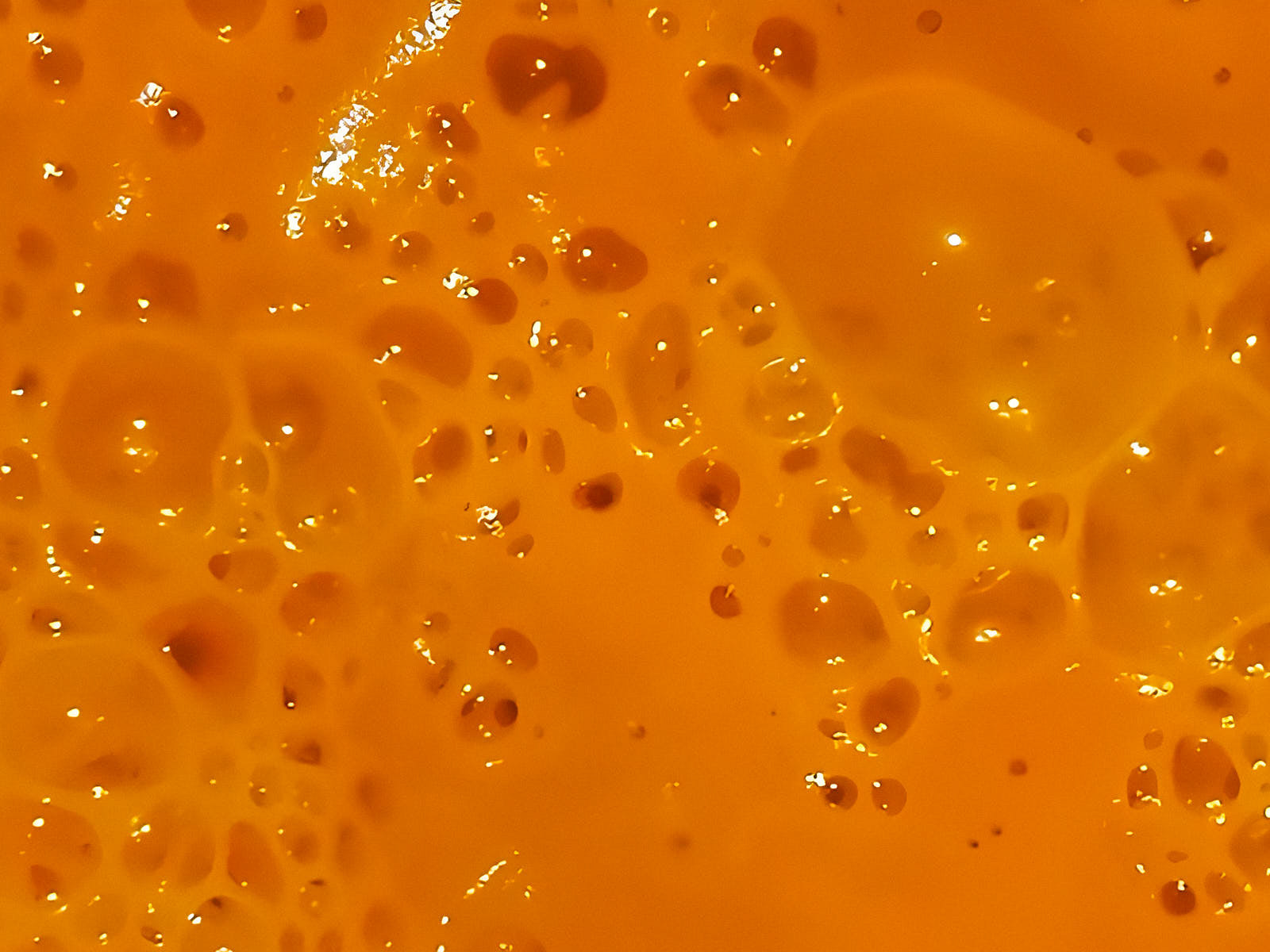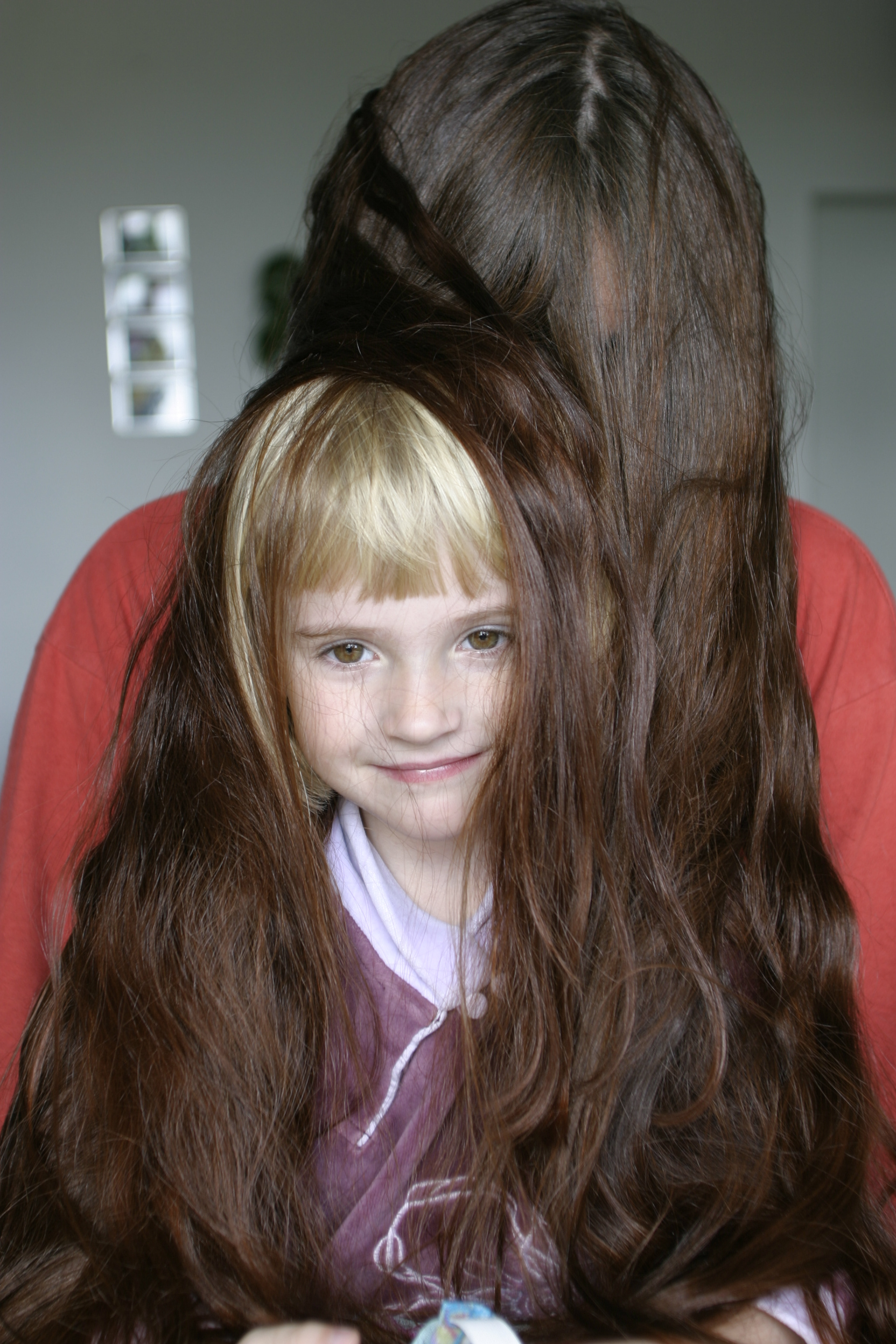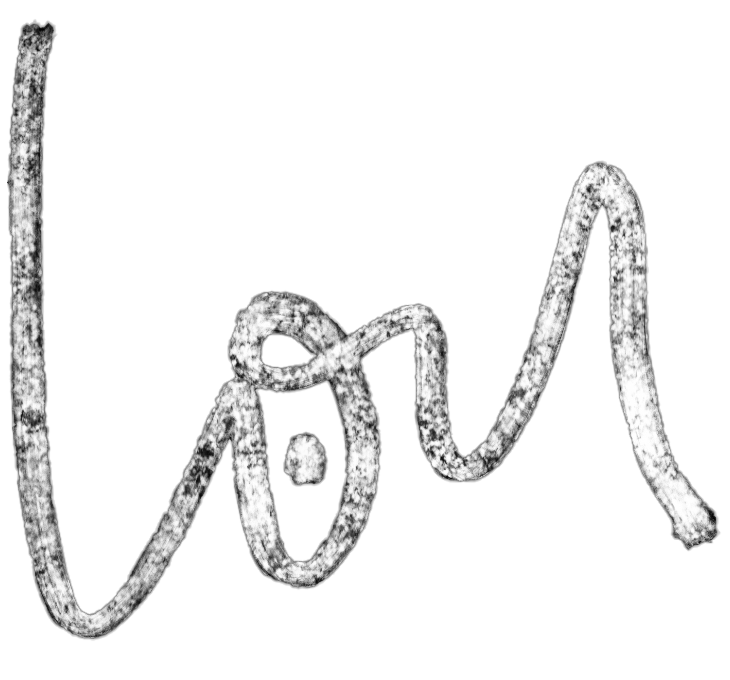"- Ils sont tellement beaux les cheveux de ta maman... C'est des vrais ?
- Ou, avant j'avais les mêmes, mais maintenant j'ai décidé qu'elle en avait assez pour nous deux."
Ce projet traite de la filiation, et de l'importance symbolique attribuée aux cheveux dans ma famille.
Ma mère a toujours eu les cheveux très longs (et très doux). Dans cet autoportrait, on retrouve donc ma chère maman partout. Elle y interprète le rôle discret mais crucial de la perruque ; mais est aussi à l'origine de la traditionnelle familiale "soupopotiron" (soupe au potiron), qui fait ici office de cadre. Le fond, lui, correspond au motif du papier peint qui tapissait les murs de sa chambre lorsqu'elle avait mon âge, déformé pour ressembler aux motifs de Klimt, son peintre préféré. La transmission et l'origine prolétaire de la famille étant particulièrement importantes aux yeux de ma grand-mère maternelle, m'inspirer des portraits de familles nobles du XVIIIe siècle était une forme de revanche sur l'Histoire. Faire sourire ma mère et ma grand-mère à la fois fut la plus belle des récompenses pour ce projet.
"- Your mummy's hair is so beautiful... Is it real?
- Yes, I used to have the same, but now I've decided she has enough for both of us."
This project is about filiation, and the symbolic importance of hair in my family.
My mother always had very long (and very soft) hair. So in this autoportrait, my dear mummy is everywhere. She plays the discret but crucial role of the wig; but she also cooked the familial traditional pumpkin soup, which is used here as a frame. Concerning the background, it is the wallpaper pattern of my mother's childhood bedroom, deformed to match Klimt's patterns, her favorite painter. Transmission and the proletarian origin of the family are particularly important to my maternal grand-mother, so taking inspiration in XVIIth century noble family portraits was a kind of revenge on History. Making my mother and my grand-mother smile has been the greatest reward for this project.




